

On this page you will find references to products and projects that the people of G.L.M have been involved with over the years.
Designed electronics and PCB for Vernier Software. Initially done with thru-hole technology to fit current manufacturing capabilities, this product was then redesigned to SMT technology as the demand for the product increased. It is still in production over 10 years later!
Designed a VCO based on a new linear-exponential core. PCB was designed with mixed technology. Thru-hole components on one side, SMT on the reverse. Ten boards were built but were never put into use. This project was to be the foundation for future works.
Redesigned VCO to conform to industry standard VME board size and connectors. New board is dual-sided SMT technology and packs more circuitry than ever before. VCO boasts 9 different simultaneous waveforms! Also featured engraved metal panels. This would be the first in a series of custom modules.
Tech Details: 0603 sized passives, SOIC chips, and hand soldered! Three units were made and are still in service today.
Installed a Quad (now Tyco) SMT assembly line. Products that were to be moved to the new line had to be re-engineered and new PCBs designed. All of this was done to minimize reel changes from one product to the next.
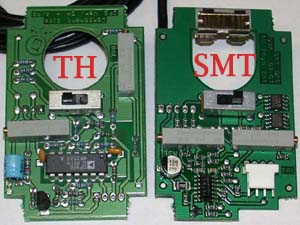
Take a look at the difference between a Thru-Hole board and the redesigned SMT board. Everything is not only more compact, but also quite a bit more organized and clean. The added space allowed a header, that was once hand soldered to the underside of the board, to be relocated to the top where it could be wave soldered instead!
Designed and built a second VME module. This time a dual-purpose board. Half the board contained 4 VCAs, the other half 2 VCAs and extra controls. Built two modules, based on each half of the PCB. The 4 VCAs designated for general purpose use. The 2 VCA module designated for stereo output. Again featured engraved panels.
Tech Details: 0603 passives, SOIC chips, still hand soldered! Only the two modules were built. They are still in service today.

Involved with all aspects of design on this product. An exclusive product of Vernier Software, the Force Plate was a challenge, as it had to be designed to take severe abuse by the end user! The twin load cells in this machine can handle up to 1000 pounds of force!
This product is still being manufactured.
The third in a series of VME-based modules. This is a voltage-controlled filter module based on the classic transistor ladder topology, but with a twist! Instead of the conventional 4-pole (24dB slope) arrangement, this version has the ability to morph from 1 to 5 poles! All features are voltage controlled, making it extremely versatile. The ability to morph the number of poles allows this filter to take on characteristics that are not available in any other filter, but can sound very much like many of the classic filters.
Tech Details: 0603 passives, SOIC chips, engraved panel, and still hand soldered! Two of these were built and are still in service today!
Designed and built a 4th VME module. This is to be the biggest engineering project to date! A few years in the making, this module sports four PCBs, two for the front panel interface, and the VME board plus a daughter card. The SVG is a combination sequencer, voltage controlled switch, and lag generator. All based on a discrete logic design with no micro involved!
Tech Details: 322 parts used for the front panel interface, 348 parts used for the VME and daughter boards, for a grand total of 670 parts! Three units were built, but only one was ever completed. Currently in service.
Designed electronics and PCB for the A.U. Physics Enterprises Diffusion Cloud Chamber. This device is quite extraordinary and very fun to watch. When certain types of radioactive sources are present, particle trails (similar to jet trails) are formed in the chamber!

This board transfers power from an external brick converter to interior cooling device and the chamber lighting array. It also converts the incoming 12 volts into a 1000 volt DC supply for an external electrode. The high voltage line is completely safe to touch, with over 100 MegaOhms of impedance!
A client wanted to convert a Frostwave Resonator pedal into a Blacet compatible module. This was an extremely challenging task considering the size of the PCB and the signal levels. The custom panel is just the beginning of all the work that was put into this module!
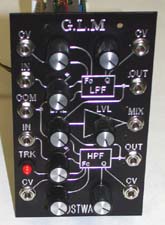
A custom mounting bracket was made to support the PCB behind the front panel. It is secured to the front panel by way of the left three pots. This assured a clean look as no additional holes had to be drilled in the front panel!
The main PCB was heavily modified to accommodate new features, as well as correcting the signal levels from line level to modular level. What elements couldn't be added to the original PCB was added to a perf board daughter PCB.
The end result? Separated HP and LP filters with built in mixer. One shared input, plus 2 individual inputs with serge-style +/- attenuators. The HP can also track the LP with a push of a button!
This unit had the original EL foil backlit LCD display replaced with a modern LED backlit unit. This alleviates the need to ever replace the display again, since LEDs do not fade over time unlike EL foil. Unfortunately this was an extremely difficult modification and is NOT recommended for anyone except the most confident of techs!
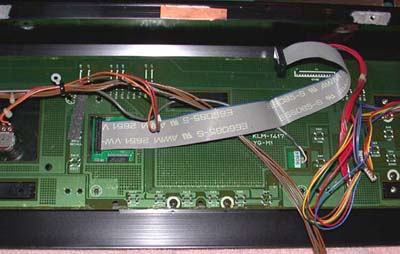
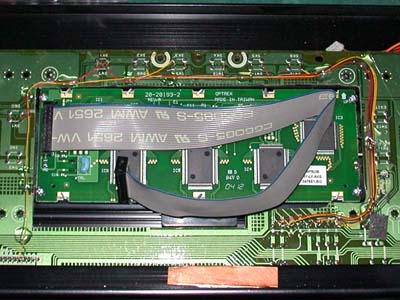
The Wavestation also received some other cosmetic modifications, including illuminated wheels, a four-color illuminated joystick bezel, and a super-bright LED for the edit/compare button. The Wavestation is now ready to be played on the stage in low-light conditions!

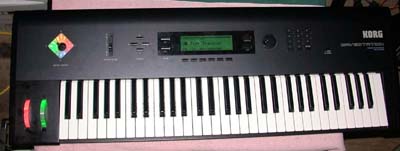
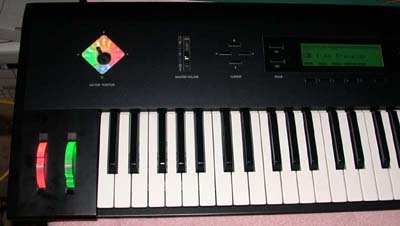
A local businessman approached me last year to do some contract assembly for a product he was just starting to market called Point And Cut. At the same time, he was interested in also having the electronics redesigned. However, it was a low priority issue at the time, as the contract assembly would keep him going for quite a few months. I had done some feasibility studies, so I was confident that when he was ready, I would be able to vastly improve on the current design.
Fast forward to a few months ago. His product was featured on the Home and Garden television show called I Want That. Now it was a race against time to do the redesign and get it into production in order to satisfy orders that would be rolling in!
I was given full control of not only the design of the electronics, but also how the electronics would integrate into the hardware, as well as also be responsible for constructing the wiring harnesses to tie everything together! As the redesigned electronics would be radically different from the original electronics, it would be necessary to ensure that the assembly process be as simple as possible for the client.
The original electronics utilized a contact based control system for operating the various internal moving parts. My goal was to move to a contactless based control system which would vastly improve the longevity of the unit. By moving to SMT technology, all of the electronics could be squeezed into a third of the original space, allowing the board to be centrally located in the unit which eliminated about half of the original wiring!
Another major improvement in the redesign was to utilize a microcontroller to handle the operation of the unit. By moving to a micro, consistency between units is greatly improved, which means less time calibrating and testing. As with any micro, software is easily modified to account for changes in hardware, which means longevity in the design.
This is a mixed-technology board and must be both reflow and wave soldered. The boards were panelized into a 1 by 10 array and scored for easy depanelization.



Tech Details: 0805 passives, SOIC and SSOP ICs. Currently in production.